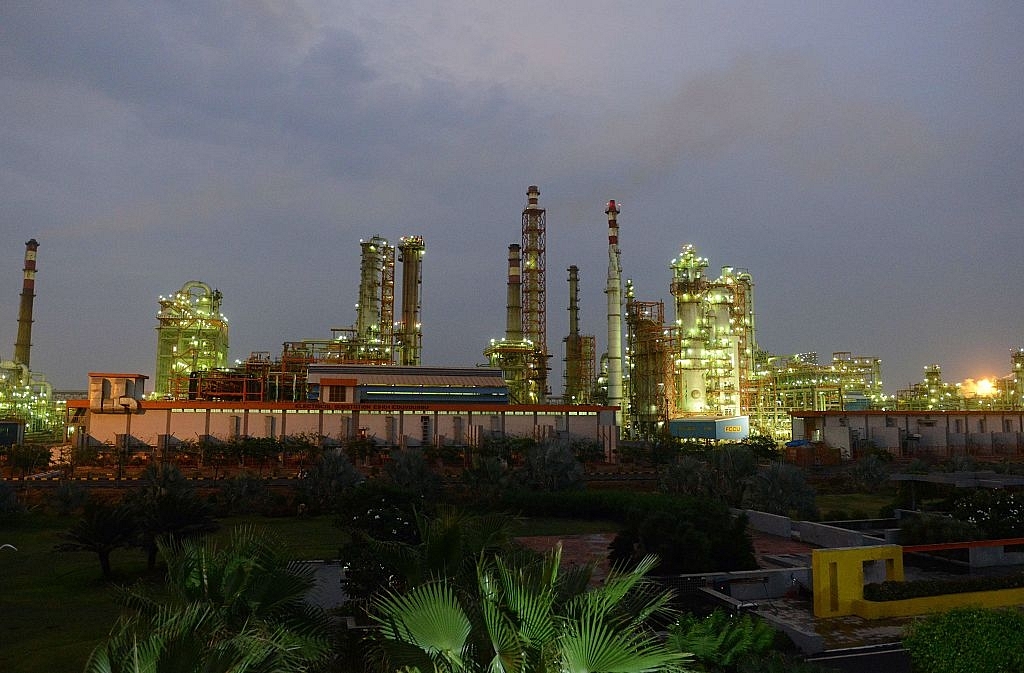Insta
Highest Asset Sales In India Since Economic Liberalisation Recorded In 2016

An Essar Oil refinery at Vadinar village, near Jamnagar. Photo credit: SAM PANTHAKY/AFP/GettyImages
Contrary to popular belief, Indian firms are investing enough, they have sold more assets in 2016 than they have in any year since liberalisation. According to the data released by Thomson Reuters Eikon, the asset-sale deals announced, pending or completed in 2016, are worth $40.85 billion. This leaves behind the peak of $27.96 billion announced in 2007 by a significant margin.
While investors who were looking for a stake in the ‘India growth story’ formed the peak in last few years, the latest round of asset deals have been steered by the distress of indebted corporations. Essar was featured on the top of the list in 2007 and still remains on the top, in 2016. Vodafone’s acquisition of Hutchison Essar, and Matsushita Electric Works’ acquisition of Anchor Electricals were among the top deals in 2007. The top deals in 2016 include PJSC Rosneft Oil Co’s purchase of stake in Essar Oil and UltraTech Cement Ltd’s acquisition of Jaypee Group’s cement assets.
As the data shows, stressed firms in debt-hit sectors such as energy, real estate, and metals have driven asset sales.
The current debt crisis developed during the economic crash in 2008 and the dismantlement of this debt in India’s corporate sector is taking time. The delayed recognition of bad loans by banks and other regulatory authorities ensured that indebted firms and conglomerates did not face the pressures of paying back their debts. According to Credit Suisse, total borrowings of the top 10 indebted groups stood at Rs 7.3 trillion.
“Contrary to expectations of a recovery in stressed companies, the share of debt with interest cover (IC) saw a slight increase up to 39 per cent vs 38 per cent. The share of chronically stressed companies also increased to 34 per cent vs 32 per cent QoQ, and 30 per cent (vs 34 per cent) debt was with loss-making companies,” noted a 19 September Credit Suisse report by analysts Ashish Gupta, Kush Shah and Prashant Kumar.
Now, with tightening of norms and greater power provided to lenders, defaulters have been forced to consider selling distressed asset. But despite the asset selling spree, an end to India’s debt woes is still not in sight.
The story first appeared on livemint.com.
Support Swarajya's 50 Ground Reports Project & Sponsor A Story
Every general election Swarajya does a 50 ground reports project.
Aimed only at serious readers and those who appreciate the nuances of political undercurrents, the project provides a sense of India's electoral landscape. As you know, these reports are produced after considerable investment of travel, time and effort on the ground.
This time too we've kicked off the project in style and have covered over 30 constituencies already. If you're someone who appreciates such work and have enjoyed our coverage please consider sponsoring a ground report for just Rs 2999 to Rs 19,999 - it goes a long way in helping us produce more quality reportage.
You can also back this project by becoming a subscriber for as little as Rs 999 - so do click on this links and choose a plan that suits you and back us.
Click below to contribute.
Latest